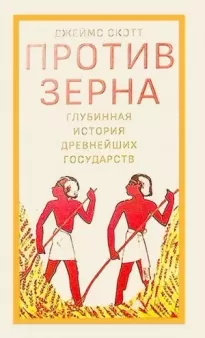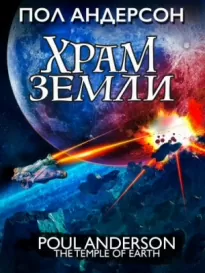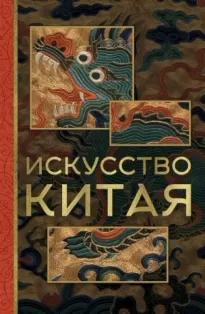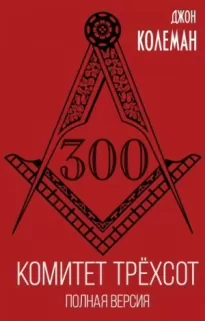Dalfes, H. Nuzhet, George Kukla, and Harvey Weiss. ttird Millennium BC Climate Change and Old World Collapse. NATO Advanced Science Institutes Series, Series I, Global Environmental Change 49 (2013).
Dark, Petra, and Henry Gent. “Pests and Diseases of Prehistoric Crops: A Yield ‘Honeymoon’ for Early Grain Crops in Europe?” Oxford Journal of Archaeology 20, no. 1 (2001): 59–78.
Darwin, John. After Tamerlane: The Rise and Fall of Global Empires, 1400–2000. London: Penguin, 2007.
Deacon, Robert T. “Deforestation and Ownership: Evidence from Historical Accounts and Contemporary Data.” Land Economics 75, no. 3 (1999): 341–359.
Diakonoff, I. M. Structure of Society and State in Early Dynastic Sumer. Malibu, Calif.: Monographs of the Ancient Near East, 1, no. 3 (1974).
Diamond, Jared. Guns, Germs, and Steel: The Fates of Human Societies. New York: Norton, 1997.
Dickson, D. Bruce. “Circumscription by Anthropogenic Environmental Destruction: An Expansion of Carneiro’s (1970) Theory of the Origin of the State.” American Antiquity 52, no. 4 (1987): 709–716.
Di Cosmo, Nicola. “State Formation and Periodization in Inner Asian History.” Journal of World History 10, no. 1 (1999): 1-40.
Di Cosmo, Nicola. Ancient China and Its Enemies: The Rise of Nomadic Power in East Asian History. Cambridge: Cambridge University Press, 2011.
Dietler, Michael. “The Iron Age in the Western Mediterranean.” In Scheidel et al., Cambridge Economic History, 242–276.
Dietler, Michael, and Ingrid Herbich. “Feasts and Labor Mobilization: Dissecting a Fundamental Economic Practice.” In M. Dietler and Brian Hayden, eds., Feasts: Archaeological and Ethnographic Perspectives on Food, Politics, and Power, 240–264. Washington, D.C.: Smithsonian Institution Press, 2001.
Donaldson, Adam. “Peasant and Slave Rebellions in the Roman Republic.” Ph.D. diss., University of Arizona, 2012.
D’Souza, Rohan. Drowned and Dammed: Colonial Capitalism and Flood Control in Eastern India. New Delhi: Oxford University Press, 2006.
Dyson-Hudson, Rada, and Eric Alden Smith. “Human Territoriality: An Ecological Reassessment.” American Anthropologist new ser. 890, no. 1 (1973): 21–41.
Eaton, S. Boyd, and Melvin Konner. “Paleolithic Nutrition.” New England Journal of Medicine 312, no. 5 (1985): 283–290.
Ebrey, Patricia Buckley. The Cambridge Illustrated History of China. Cambridge: Cambridge University Press, 1996.
Elias, Norbert. The Civilizing Process: Sociogenic and Psychogenic Investigations, rev. ed. Oxford: Blackwell, 1994.
Ellis, Maria de J. “Taxation in Ancient Mesopotamia: The History of the Term Miksu.” Journal of Cuneiform Studies 26, no. 4 (1974): 211–250.
Elvin, Mark. Retreat of the Elephants: An Environmental History of China. New Haven: Yale University Press, 2004.
Endicott, Kirk. “Introduction: Southeast Asia.” In Richard B. Lee and Richard Daly, eds., The Cambridge Encyclopedia of Hunters and Gatherers, 275–283. Cambridge: Cambridge University Press, 1999.
Englund, Robert. “Texts from the Late Uruk Period,” in Josef Bauer, Robert K. Englund, and Manfred Krebernik, eds., Mesopotamien: Spaturuk-Zeit und fruhdynastische Zeit, 13-233. Freiburg: Universitatsverlag, 1998.
Eshed, Vered, et al. “Has the Transition to Agriculture Reshaped the Demographic Structure of Prehistoric Populations? New Evidence from the Levant.” American Journal of Physical Anthropology 124 (2004): 315–329.
Evans-Pritchard, E. E. The Nuer: A Description of the Modes of Livelihood and Political Institutions of a Nilotic People. Oxford: Clarendon, 1940.
Evin, Allowen, et al. “The Long and Winding Road: Identifying Pig Domestication Through Molar Size and Shape.” Journal of Archaeological Science 40 (2013): 735–742.
Farber, Walter. “Health Care and Epidemics in Antiquity: The Example of Ancient Mesopotamia.” Lecture, Oriental Institute, June 26, 2006, CHIASMOS, https://www.youtube.com/watch?v=Yw_4Cghic_w.
_____. “How to Marry a Disease: Epidemics, Contagion, and a Magic Ritual Against the ‘Hand of the Ghost’”, in H. F.J. Horstmanshoff and M. Stol, eds., Magic and Rationality in Ancient Near Eastern and Greco-Roman Medicine, 117–132. Leiden: Brill, 2004.
Febvre, Lucien. A Geographical Introduction to History. Trans. E. G. Mountford and J. H. Paxton. London: Routledge Kegan Paul, 1923.
Feinman, Gary M., and Joyce Marcus. Archaic States. Santa Fe, N. M.: School of American Research, 1998.
Fenner, Frank. “The Effects of Changing Social Organization on the Infectious Diseases of Man.” In Boyden, Impact of Civilisation, 48–68.
Ferguson, R. Brian, and Neil L. Whitehead. “The Violent Edge of Empire.” In R. Brian Ferguson and Neil L. Whitehead, eds., War in the Tribal Zone: Expanding States and Indigenous Warfare, 1-30. Santa Fe, N.M.: School of American Research, 1992.
Fiennes, R. N. Zoonoses and the Origins and Ecology of Human Disease. London: Academic Press, 1978.
Finley, M. I. “Was Greek Civilization Based on Slave Labour?” Historia: Zeitschriftfur alte geschichte 8, no. 2 (1959): 145–164.
Fiskesjo, Magnus. “The Barbarian Borderland and the Chinese Imagination: Travelers in Wa Country.” Inner Asia 5, no. 1 (2002): 81–99.
Flannery, Kent V. “Origins and Ecological Effect of Early Domestication in Iran and the Middle East.” In Ucko and Dimbleby, Domestication and Exploitation, 73-100.
Fletcher, Joseph. “The Mongols: Ecological and Social Perspectives.” Harvard Journal of Asiatic Studies 46, no. 1 (1986): 11–50.
Fowler, Catherine “Ecological/Cosmological Knowledge and Land Management Among Hunter-Gatherers,” in Lee and Daly, The Cambridge Encyclopedia of Hunters and Gatherers, 419–425.
French, E. B., and K. A. Wardle, eds. Problems in Greek Prehistory: Papers Presented at the Centenary Conference of the British School of Archaeology at Athens. Manchester: Bristol Classical Press, 1986.
Friedman, Jonathan. “Tribes, States, and Transformations: An Association for Social Anthropology Study.” In Maurice Bloch, ed., Marxist Analyses and Social Anthropology, 161–200. New York: Wiley 1975.
Fukuyama, Francis. The Origins of Political Order: From Prehuman Times to the French Revolution. New York: Farrar, Straus and Giroux, 2011.
Fuller, Dorian Q., et al. “Cultivation and Domestication Has Multiple Origins: Arguments Against the Core Area Hypothesis for the Origins of Agriculture in the Near East.” World Archaeology 43, no. 4, special issue, Debates in World Archaeology (2011): 628–652.
Gelb, J.J. “Prisoners of War in Early Mesopotamia.” Journal of Near Eastern Studies 32, no. 12 (1973): 70–98.
Gibson, McGuire, and Robert D. Briggs. “The Organization of Power: Aspects of Bureaucracy in the Ancient Near East.” Studies in Ancient Oriental Civilization, no. 46. Chicago: Oriental Institute of the University of Chicago, 1987.
Gilbert, Allan S. “Modern Nomads and Prehistoric Pastoralists: The Limits of Analogy.” Journal of the Ancient Near Eastern Society 7 (1975): 53–71.
Gilman, A. “The Development of Social Stratification in Bronze Age Europe.” Current Anthropology 22 (1981): 1-23.
Gitin, Seymour, Amihai Mazar, and Ephraim Stern, eds. Mediterranean Peoples in Transition: Thirteenth to Early Tenth Centuries BCE. In Honor of Professor Trude Dothan. Jerusalem: Israel Exploration Society, 1998.
Goelet, Ogden. “Problems of Authority, Compulsion, and Compensation in Ancient Egyptian Labor Practices.” In Steinkeller and Hudson, Labor in the Ancient World, 523–582.
Golia, Maria. “After Tahrir”, Times Literary Supplement, February 12, 2016, p. 14.
Goring-Morris, A. Nigel, and Anna Belfer-Cohen. “Neolithization Processes in the Levant: The Outer Envelope.” Current Anthropology 52, no. S4, The Origins of Agriculture: New Data, New Ideas (2011): S195-S208.
Goudsblom, Johan. Fire and Civilization. London: Penguin, 1992.
Graeber, David. Debt: The First §,000 Years. London: Melville House, 2011.
Greger, Michael. “The Human/Animal Interface: Emergence and Resurgence of Zoonotic Infectious Diseases.” Critical Reviews in Microbiology 33 (2007): 243–299.
Grinin, Leonid E., et al., eds. The Early State, Its Alternatives and Analogues. Volgograd: “Uchitel,” 2004.
Groenen, Martien A. M., et al. “Analysis of Pig Genome Provides Insight into Porcine Domestication and Evolution.” Nature 491 (2012): 391–398.
Groube, Les. “The Impact of Diseases upon the Emergence of Agriculture.” In D. R. Harris, ed., The Origins and Spread of Agriculture andPastoralism in Eurasia, 101–129. Washington, D. C.: Smithsonian Institution Press, 1996.
Halstead, Paul, and John O’Shea, eds. Bad Year Economics: Cultural Responses to Risk and Uncertainty. Cambridge: Cambridge University Press, 1989.
Hamalainen, Pekka. Comanche Empire. New Haven: Yale University Press, 2009.
_____. “What’s in a Concept? The Kinetic Empire of the Comanches,” History and Theory 52, no. 1 (2013): 81–90.
Harari, Yuval Noah. Sapiens: A Brief History of Humankind. London: Harvill Secker, 2011.
Harlan, Jack R. Crops and Man, 2nd ed. Madison, Wis.: American Society of Agronomy, Crop Science Society of America, 1992.
Harris, David R. Settling Down and Breaking Ground: Rethinking the Neolithic Revolution. Amsterdam: Kroon-Voordrachte 12, 1990.
Harris, David R., and Gordon C. Hillman, eds. Foraging and Farming: The Evolution of Plant Exploitation. London: Unwin Hyman, 1989.
Harrison, Mark. Contagion: How Commerce Has Spread Disease. New Haven: Yale University Press, 2012.
Headland, T. N., “Revisionism in Ecological Anthropology.” Current Anthropology 38, no. 4 (1997): 43–66.
Headland, T. N. and L. A. Reid. “Hunter-Gatherers and Their Neighbors from Prehistory to the Present.” Current Anthropology 30, no. 1 (1989): 43–66.
Heather, Peter. The Fall of the Roman Empire: A New History of Rome and the Barbarians. Oxford: Oxford University Press, 2006.
Hendrickson, Elizabeth, and Ingolf Thuesen, eds. Upon This Foundation: The Ubaid Reconsidered. Copenhagen: Museum Tusculanum Press, Carsten Niebuhr Institute of Ancient Near Eastern Studies.
Hillman, Gordon. “Traditional Husbandry and Processing of Archaic Cereals in Recent Time: The Operations, Products, and Equipment Which Might Feature in Sumerian Texts.” Bulletin of Sumerian Agriculture 1 (1984): 114–172.
Hochschild, Adam. Bury the Chains: Prophets and Rebels in the Fight to Free an Empire’s Slaves. New York: Houghton Mifflin, 2015.
Hodder, Ian. The Domestication of Europe: Structure and Contingency in Neolithic Societies. Oxford: Blackwell, 1990.
Hole, Frank. “A Monumental Failure: The Collapse of Susa.” In Robin A. Carter and Graham Philip, eds., Beyond the Ubaid: Transformation and Integration of Late Prehistoric Societies of the Middle East, 221–226. Studies in Oriental Civilization, no. 653. Chicago: Oriental Institute of the University of Chicago, 2010.
Houston, Stephen. The First Writing: Script Invention as History and Process. Cambridge: Cambridge University Press, 2004.
Hritz, Carrie, and Jennifer Pournelle. “Feeding History: Deltaic Resiliene Inherited Practice and Millennia-scale Sustainability.” In H. Thomas Foster II, David John Goldstein, and Lisa M. Paciulli, eds., The Future in the Past: Historical Ecology Applied to Environmental Issues, 59–85. Columbia: University of South Carolina Press, 2015.
Hughes, J. Donald. The Mediterranean: An Environmental History. Santa Barbara: ABC–CLIO, 2005.
Ingold, T. “Foraging for Data, Camping with Theories: Hunter-Gatherers and Nomadic Pastoralists in Archaeology and Anthropology.” Antiquity 66 (1992): 790–803.
Irons, William G. “Livestock Raiding Among Pastoralists: An Adaptive Interpretation.” In Papers of the Michigan Academy of Science, Arts, and Letters 383–414. Ann Arbor: University of Michigan Press, 1965.
_____. “Cultural Capital, Livestock Raiding, and the Military Advantage of Traditional Pastoralists.” In Grinin et al., e Early State, 466–475.
Jacobs, Jane. The Economy of Cities. New York: Vintage, 1969.
Jacoby, Karl. “Slaves by Nature? Domestic Animals and Human Slaves.” Slavery and Abolition 18, no. 1 (1994): 89–98.
Jameson, Michael H. “Agriculture and Slavery in Classical Athens.” Classical Journal 73, no. 2 (1977): 122–145.
Jones, David S. “Virgin Soils Revisited.” William and Mary Quarterly 3rd ser. 60, no. 4 (2003): 703–742.
Jones, Martin. Feast: Why Humans Share Food. Oxford: Oxford University Press, 2007.
Kealhofer, Lisa. “Changing Perceptions of Risk: The Development of Agro-Ecosystems in Southeast Asia.” American Anthropologist new ser. 104, no. 1 (2002): 178–194.
Keightley, David N., ed. The Origins of Chinese Civilization. Berkeley: University of California Press, 1983.
Kennett, Douglas J., and James P. Kennett. “Early State-Formation in Southern Mesopotamia: Sea Levels, Shorelines, and Climate Change.” Journal of Island and Coastal Archaeology 1 (2006): 67–99.
Khazanov, Anatoly M. “Nomads of the Eurasian Steppes in Historical Retrospective.” In Grinin et al., The Early State, 476–499.
Kleinman, Arthur M., et al. “Introduction: Avian and Pandemic Influenza: A Bio-Social Approach.” Journal of Infectious Diseases 197, supplement 1 (2008): S1-S3.
Kohn, Meir. The Origins of Western Economic Success: Commerce, Finance, and Government in Preindustrial Europe. January 2001, https:/ / sites.dartmouth.edu/mkohn/origins/.
Kolbert, Elizabeth. The Sixth Extinction: An Unnatural History. New York: Henry Holt and Company, 2014.
Kovacs, Maureen Gallery, trans. The Epic of Gilgamesh. Stanford: Stanford University Press, 1985.
Kradin, Nikolay N. “Nomadic Empires in Evolutionary Perspective.” In Grinin et al., The Early State, 501–523.
Larson, Gregor. “Ancient DNA, Pig Domestication, and the Spread of the Neolithic into Europe.” Proceedings of the National Academy of Sciences 104, no. 39 (2007): 15276-15281.
_____. “Patterns of East Asian Pig Domestication, Migration, and Turnover Revealed by Modern and Ancient DNA.” Proceedings of the National Academy of Sciences 107, no. 17 (2010): 7686–7691.
Larson, Gregor, and Dorian Q. Fuller. “The Evolution of Animal Domestication.” Annual Review of Ecology, Evolution, and Systematics 45 (2014): 115–136.
Lattimore, Owen. “The Frontier in History” and “On the Wickedness of Being Nomads.” In Studies in Frontier History: Collected Papers, ig28–igy8, 469–491 and 415–426, respectively. London: Oxford University Press, 1962.
Lawrence, David H. “Introduction,” in Feodor M. Dostoevsky, The Grand Inquisitor. London: Elkin Matthews & Marrot, 1930.
Leach, Helen M. “Human Domestication Reconsidered.” Current Anthropology 44, no. 3 (2003): 349–368.
Lee, Richard B. “Population Growth and the Beginnings of Sedentary Life Among the!Kung Bushmen.” In Brian Spooner, ed., Population Growth: Anthropological Implications, 301–324. Cambridge: MIT Press, 1972. http://www.popline.org/node/517639.
Lee, Richard B., and Richard Daly, The Cambridge Encyclopedia of Hunters and Gatherers. Cambridge: Cambridge University Press, 1999.
Lefebvre, Henri. The Production of Space. New York: Wiley-Blackwell, 1992.
Lehner, Mark. “Labor and the Pyramids: The Hiet el-Ghurab ‘Workers Town’ at Giza.” In Steinkeller and Hudson, Labor in the Ancient World, 396–522.
Levi-Strauss, Claude. La Pensee sauvage. Paris: Plon, 1962.
Lewis, Mark Edward. The Early Chinese Empires: Qin and Han. Cambridge: Belknap Press of Harvard University Press, 2007.
Lieberman, Victor. Strange Parallels: Southeast Asia in Global Context, c. 800–1830, vol. 1, Integration on the Mainland. Cambridge: Cambridge University Press, 2003; vol. 2, Mainland Mirrors: Europe, Japan, China, Southeast Asia and the Islands. Cambridge: Cambridge University Press, 2009.
Lindner, Rudi Paul. Nomads and Ottomans in Medieval Anatolia. Indiana University Uralic and Altaic Series 144, Stephen Halkovic, ed. Bloomington: Research Institute for Inner Asian Studies, Indiana University, 1983.
Mann, Charles C. 1491: New Revelations of the Americas Before Columbus. New York: Knopf, 2005.
Manning, Richard. Against the Grain: How Agriculture Has Hijacked Civilization. New York: Northpoint, 2004.
Marston, John M. “Archaeological Markers of Agricultural Risk Management.” Journal of Archaeological Anthropology 30 (2011): 190–205.
Matthews, Roger. e Archaeology of Mesopotamia: eories and Approaches. Oxford: Routledge, 2003.
Mayshar, Joram, Omer Moav, Zvika Neeman, and Luigi Pascali. “Cereals, Appropriability, and Hierarchy.” CEPR Discussion Paper 10742 (2015). www.cepr.org/active/publications/discussion_papers/dp.php?dpno=10742.
McAnany, Patricia, and Norman Yoffee, eds. Questioning Collapse: Human Resilience, Ecological Vulnerability, and the Aftermath of Empire. Cambridge: Cambridge University Press, 2009.
McCorriston, Joy. “The Fiber Revolution: Textile Extensification, Alienation, and Social Stratification in Ancient Mesopotamia.” Current Anthropology 38, no. 4 (1997): 517–535.






